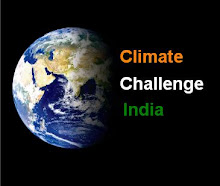Division is killing us. We need to connect things. Or else, we end up like not five, but fifty un-informed persons trying to describe an elephant! Why do our curricula not actively promote connections among all subjects being taught at schools and colleges?
Don’t hold your breath for The System to change. Take the initiative yourself! Your mind is your own. Own it. Nurture it.
I keep harping on several issues plaguing our education system. These issues are all connected to each other.
- Unimaginative syllabi that kill a student’s curiosity and joy of learning. Have you seen the chapter on climate change in any EVS (environmental science) text book lately? It hardly invites the student to ask any serious questions. Nothing in it even vaguely connects to anything the student can observe or meaningfully do.
- Subjects are not connected to each other. Until we stop compartmentalizing subjects, we will end up training students, not educating them. One simple unit on climate change can help students learn
- Statistics (calculate mean annual rainfall and monthly minimum and maximum temperatures for each year for the past decade),
- Computer studies (use software to graph the data and visually examine trends),
- Biology (learn about importance of species and their sustenance),
- Chemistry (the nature of green-house-gas molecules and how they affect climate),
- Language (write about climate change topics; this will also help you develop a scientific vocabulary in the language you are learning),
- History (how did the industrial revolution contribute to climate change and what does it mean in today’s history; current events are history that is going on NOW),
- Physics (how do heat and pressure work in creating different atmospheric conditions and what happens when these are changed),
- Economics (how are industry, agriculture and other economic sectors affected by climate change),
- Business studies (how do businesses adapt to climate change, what are green markets, “green” jobs, etc.), and so on.
- Statistics (calculate mean annual rainfall and monthly minimum and maximum temperatures for each year for the past decade),
- Teachers are not given enough support (if at all) to make these connections in their classes. Many of our teachers are passionate about teaching well. However, we need to give them the teaching resources, content, and training to teach in new, effective, and interesting ways.
- Care-givers (parents, guardians, etc.) need to become more actively involved in children’s studies. Every trip to the market (whether it is a supermarket or the vegetable mandi at the street corner) can be a lesson in the environmental and other costs of foodstuffs. Every practice at home can be carefully managed to reduce its ecological impact. This kind of engagement will not only help children learn climate-affirmative behaviors but also help strengthen the bonds between generations (grandparents, parents, children).
All these have to become part of our education in general, climate change education in particular.
CSM begins its outreach engagement with workshops and other activities from the 2nd Saturday of August at the Army Public School, Bangalore. Look for more information on these and other activities for students, teachers, and eventually for care givers too.
Meanwhile, if you know of innovative practices that your teachers are using to make climate change a part of your classroom experience, let me know.
If you are a teacher, I would love to hear from you about any interesting and effective means you are using to teach students about climate change.
If you are a parent or guardian, please let me know if you are doing anything with your children to help them learn about climate change and make changes in their behaviors to become more eco-friendly.
You can use the comment box below to tell the world about your innovation and effort.
Until next week then.
Chitra and Vishwanath have created a company that specializes in eco-friendly design of buildings.
Using local resources and with great care to conservation of resources,
they have been creating new ways of doing old business.
Goes to show you... being climate-affirmative is good sense and good business.



No comments:
Post a Comment